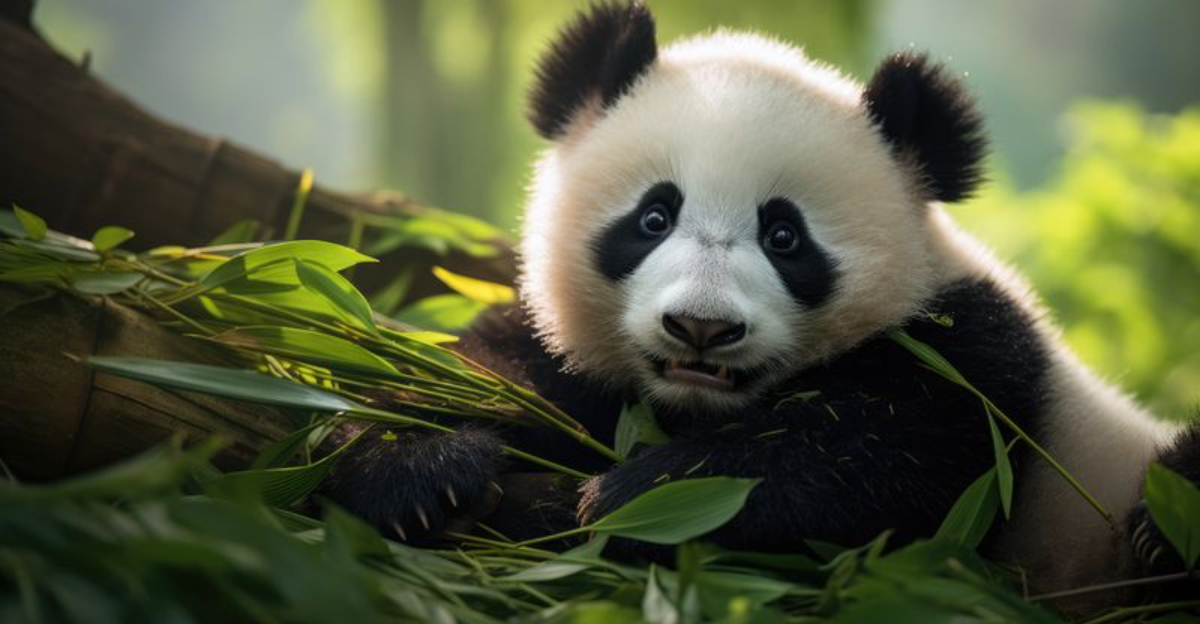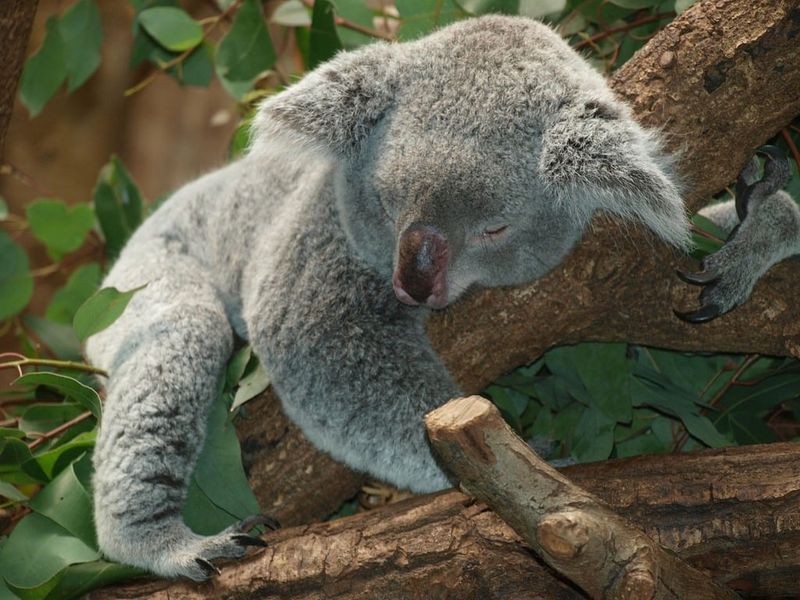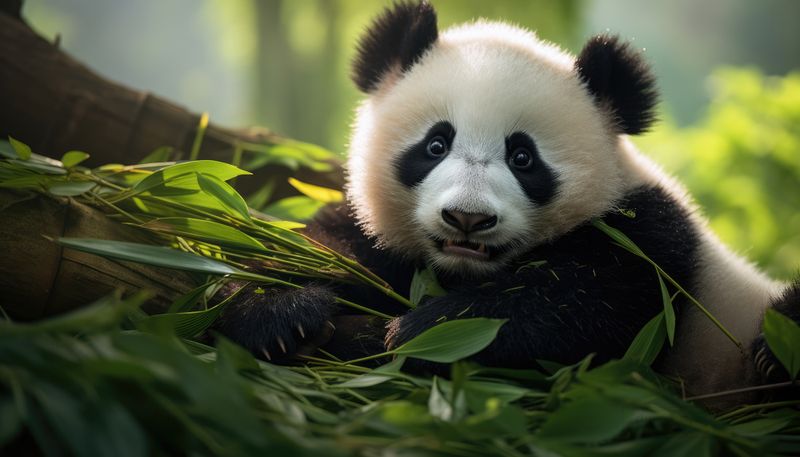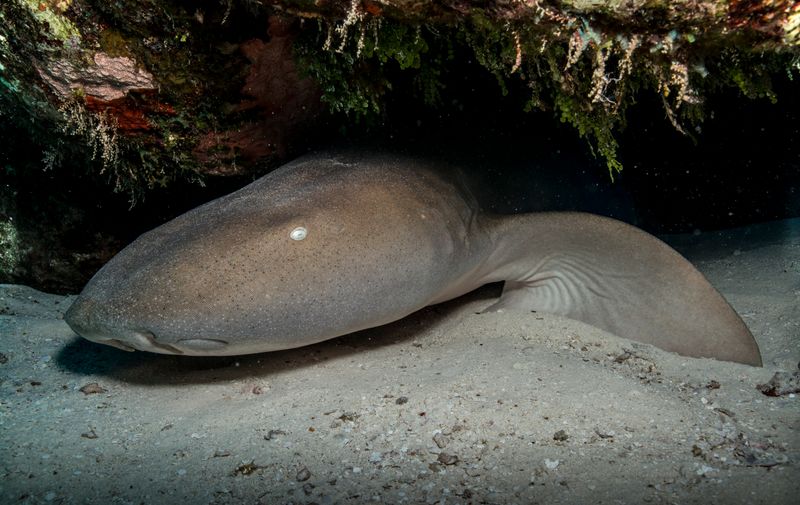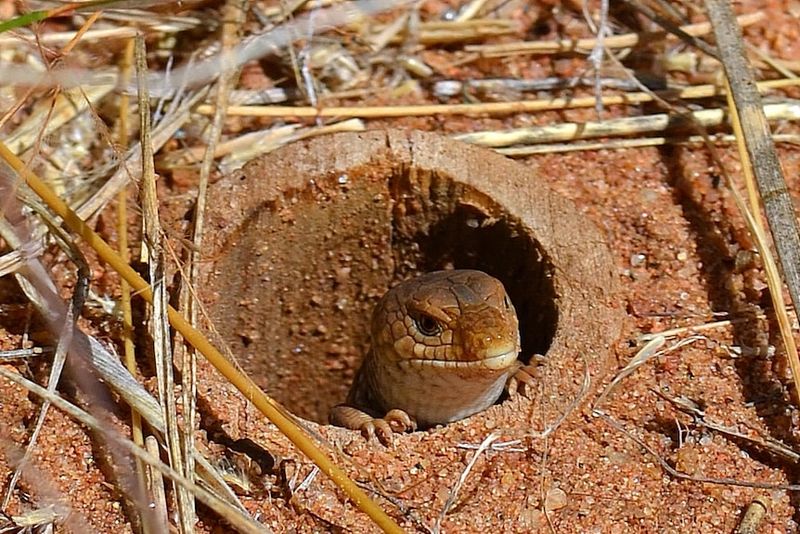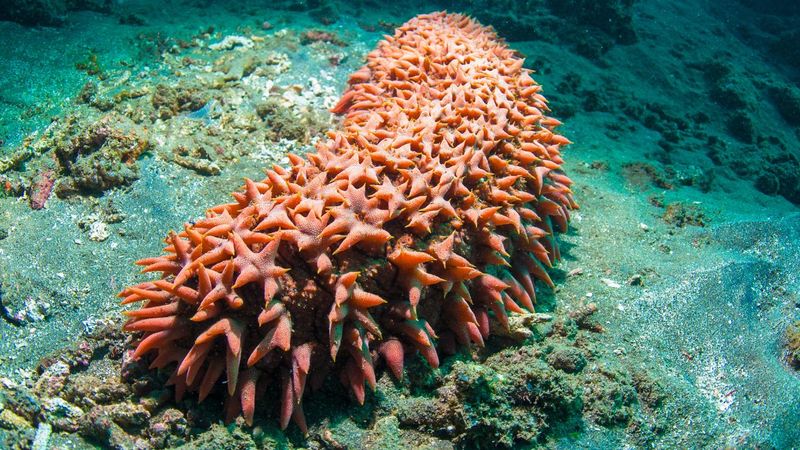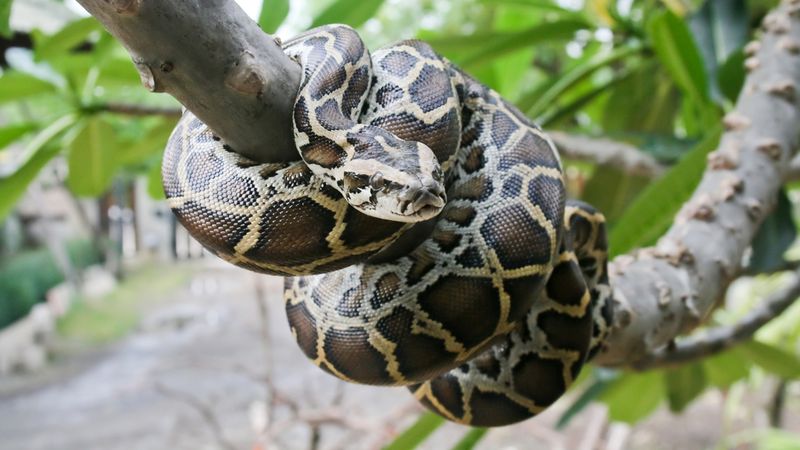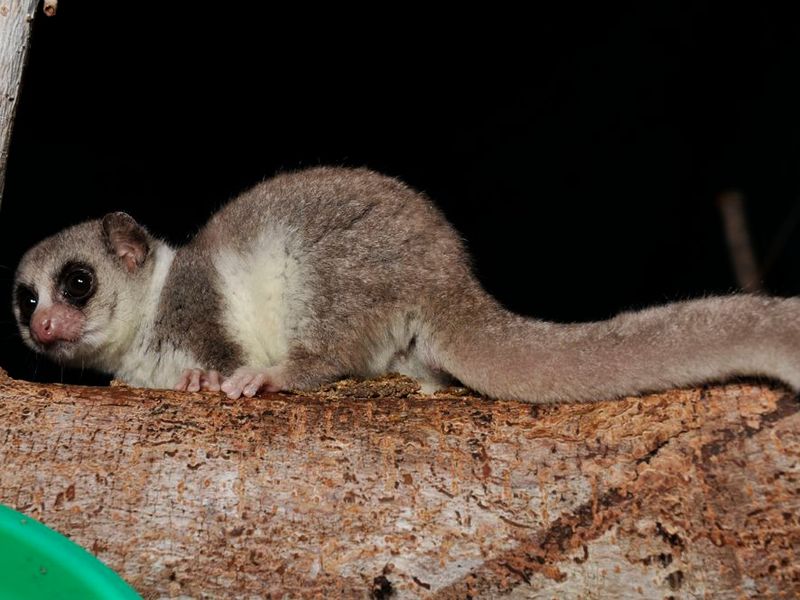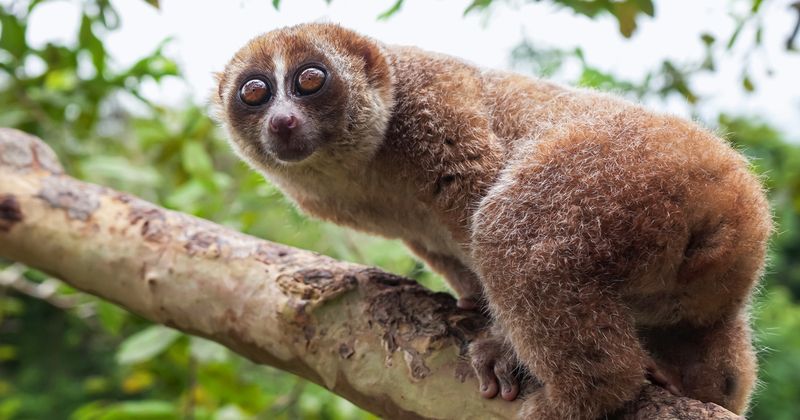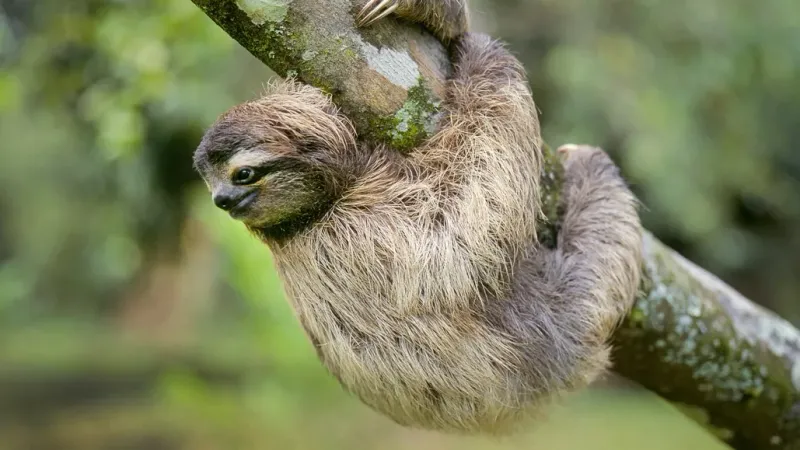When we think of lazy animals, sloths immediately come to mind with their slow-motion lifestyle. But across the animal kingdom, many creatures have mastered the art of doing absolutely nothing. These masters of relaxation have evolved special adaptations that allow them to conserve energy and survive while barely lifting a paw, fin, or tentacle. Let’s meet some of nature’s most committed couch potatoes who’ve turned laziness into a survival strategy.
Koalas: The Sleepy Eucalyptus Munchers
Snoozing champions of Australia, koalas spend a whopping 22 hours daily in dreamland! Their drowsy lifestyle isn’t just preference—it’s pure survival strategy.
Koalas munch exclusively on eucalyptus leaves, which offer minimal nutrition while requiring tremendous energy to digest. The toxic compounds in these leaves would poison most creatures, but koalas have specialized livers that detoxify them at the cost of precious energy.
When not sleeping, these fuzzy marsupials barely move, conserving every calorie while digesting their fibrous meals. Baby koalas (called joeys) inherit this laid-back approach, spending months clinging to mom’s pouch before facing the exhausting world of leaf-eating. Despite appearing cuddly, wild koalas prefer their alone time—perhaps they’re just too tired for socializing!
Giant Pandas: Bamboo-Munching Loungers
Ever wondered why giant pandas seem so relaxed all the time? These black-and-white bears have perfected the art of energy conservation, sleeping around 10 hours daily and spending the remaining time casually munching bamboo.
Unlike their carnivorous bear relatives, pandas evolved to eat bamboo—a plant so nutritionally poor that they must consume up to 40 pounds daily just to survive! This diet explains their reluctance to move unnecessarily. Their digestive systems aren’t even fully adapted for plant matter, making them incredibly inefficient eaters.
Fun fact: A panda’s activity consists mainly of eating (12 hours), sleeping (10 hours), and eliminating waste from all that bamboo. They rarely climb trees as adults and move with deliberate slowness when not motivated by food. Even mating requires too much energy, contributing to their endangered status!
Nurse Sharks: The Ocean’s Couch Potatoes
Unlike their constantly swimming cousins, nurse sharks have mastered the underwater art of doing nothing. These flat-bottomed, mustached sharks can often be found piled atop one another in caves or under ledges, sometimes stacked like lazy pancakes.
Their secret superpower? Special muscles that pump water over their gills, allowing them to breathe while completely stationary—a luxury most sharks don’t have. Nurse sharks primarily hunt at night, and even then, they’re not exactly sprinting after prey.
These laid-back predators simply suck up sleeping fish and crustaceans with their powerful vacuum-like mouths. During daylight hours, they enter a semi-sleep state while remaining aware of their surroundings. Growing up to 14 feet long yet rarely aggressive, these gentle giants exemplify how laziness can be an effective survival strategy in the animal kingdom.
Pygmy Blue Tongue Lizards: Masters of the Wait-and-See Approach
Meet Australia’s ultimate homebody—the pygmy blue tongue lizard rarely leaves its spider-built burrow! This peculiar reptile was actually thought extinct until 1992 when a dead specimen turned up in a snake’s stomach.
Unlike active hunters, these tiny lizards employ the ultimate lazy hunting technique: they simply wait for insects to wander into their burrows. With minimal movement and a diet of whatever happens to fall in, they’ve perfected energy conservation to an art form.
Their burrow-bound lifestyle keeps them safe from predators while requiring almost no effort. At just 4 inches long, these lizards sport a distinctive blue tongue that flashes as warning when they’re disturbed—which rarely happens since they avoid confrontation whenever possible. Their sedentary nature has made them vulnerable to habitat loss, as they literally won’t go far to find new homes!
Sea Cucumbers: The Ocean Floor’s Immobile Vacuum Cleaners
Resembling aquatic potatoes more than cucumbers, these bizarre echinoderms have elevated laziness to an evolutionary strategy. Sea cucumbers spend their lives sprawled across the ocean floor, barely moving except when absolutely necessary.
These marine creatures feed by extending tentacles to capture passing food particles or by ingesting sand and filtering out organic matter—essentially eating dirt for a living. Some species might not move more than a few inches in an entire week! When threatened, they don’t bother fleeing—instead, they eject their internal organs as a distraction (which later regrow).
Despite their sluggish ways, sea cucumbers perform a crucial ecosystem service by recycling nutrients in ocean sediments. Their bodies contain unique cells called morula cells that allow them to liquify their body walls and pour through tiny spaces—a handy trick when even squeezing through cracks requires too much effort!
Opossums: Playing Dead Professionals
North America’s only marsupial has turned laziness into a survival art. When confronted with danger, opossums don’t bother running—they simply flop over and play dead, sometimes for hours! This involuntary response includes slowed heart rate, drooling, and emitting a corpse-like smell.
Even when active, opossums move with deliberate slowness, waddling along at their own unhurried pace. Their body temperature runs unusually low for mammals, contributing to their energy-conserving lifestyle. These nocturnal creatures spend daylight hours snoozing in abandoned burrows or tree hollows.
Despite their reputation for laziness, opossums provide valuable ecosystem services by consuming thousands of ticks yearly and being naturally immune to rabies. Their breeding strategy also embraces efficiency—females can store sperm and delay pregnancy until conditions are favorable, requiring no additional mating effort. With 50 teeth (more than any North American mammal) but minimal aggression, they’ve mastered passive survival.
Python Snakes: The Original Couch Surfers
Pythons have perfected the art of energy conservation, sometimes going months between meals! After consuming prey (which they swallow whole), these massive reptiles might not eat again for weeks or even an entire year for larger species.
Between feedings, pythons enter a state of extreme inactivity, barely moving from their chosen resting spots. Their metabolism slows dramatically, and their organs actually shrink to conserve energy. A python’s hunting strategy perfectly matches their lazy lifestyle—rather than chasing prey, they simply ambush it from a carefully selected hiding spot.
Reticulated pythons, the world’s longest snakes, spend about 18 hours daily sleeping. Even digestion happens in slow motion, with a single meal taking up to a week to process completely. Despite their sluggish reputation, pythons can strike with lightning speed when motivated by hunger—proof that even the laziest animals can summon energy when it really counts!
Fat-Tailed Dwarf Lemurs: Hibernation Champions
Madagascar’s fat-tailed dwarf lemurs hold the title of world’s only hibernating primates. These tiny creatures spend up to eight months of the year in a torpid state, barely breathing, with heartbeats slowing to just four beats per minute!
Before their extended sleep session, these lemurs gorge themselves silly, storing fat in their tails until they double in size. Unlike typical hibernators that maintain constant low body temperature, these peculiar primates allow their body temperature to fluctuate with their surroundings—the ultimate energy-saving strategy.
During their active months, they remain relatively low-energy, moving slowly through trees and feeding primarily on fruit, nectar, and insects. Scientists study these remarkable sleepyheads hoping to understand hibernation for human medical applications. Their extreme energy conservation has helped them survive in Madagascar’s unpredictable climate, proving sometimes the laziest approach is evolutionarily brilliant!
Slow Lorises: Methodical Nighttime Crawlers
With eyes that seem permanently stuck in an adorable, sleepy expression, slow lorises truly live up to their name. These nocturnal primates move through the trees with deliberate, almost slow-motion movements that help them remain undetected by predators.
Don’t be fooled by their cute appearance—slow lorises possess a unique defensive adaptation that suits their low-energy lifestyle. Rather than fleeing from threats, they secrete toxic compounds from glands near their elbows, which they mix with saliva and deliver through a bite. This allows them to defend themselves without the energy expense of running away!
During daylight hours, these Southeast Asian primates curl into tight balls to sleep, conserving energy for their unhurried nighttime foraging. Slow lorises move so gradually that they can approach insects without triggering movement-based visual responses. Their metabolism runs at a crawl compared to similar-sized mammals—another adaptation supporting their energy-efficient lifestyle.
Three-Toed Sloths: The Iconic Energy Conservationists
No list of lazy animals would be complete without the undisputed champions of slowness. Three-toed sloths move so rarely that algae grows on their fur, creating a greenish camouflage perfect for their rainforest home. They spend about 15 hours daily sleeping and the remainder barely moving.
These remarkable mammals have the slowest digestion of any mammal, taking nearly a month to process a single meal! Their metabolic rate is less than half of what would be expected for their size. Even their bathroom habits embrace laziness—they descend to the forest floor just once weekly to defecate, a dangerous journey they’ve somehow determined is worth the effort.
Three-toed sloths have specialized muscles allowing them to hang upside down effortlessly, even while sleeping. Their body temperature fluctuates with their surroundings, saving precious energy. With a top speed of 0.15 miles per hour, they’ve embraced a philosophy that rushing through life is highly overrated!
